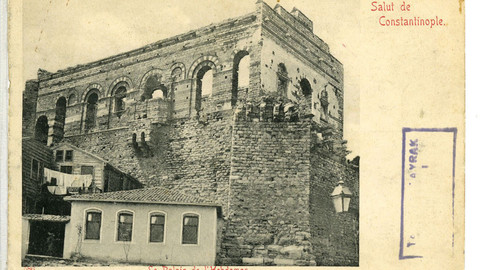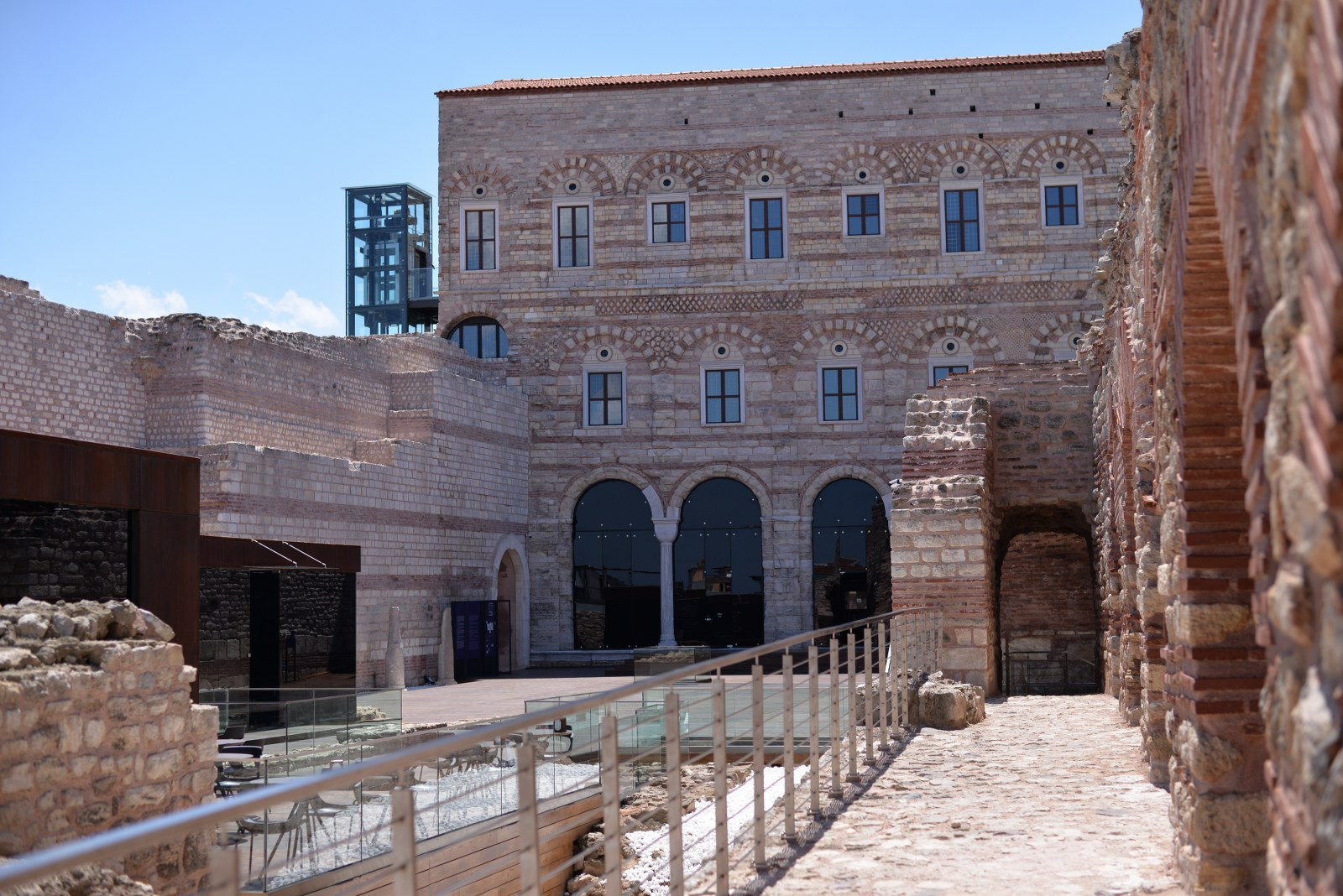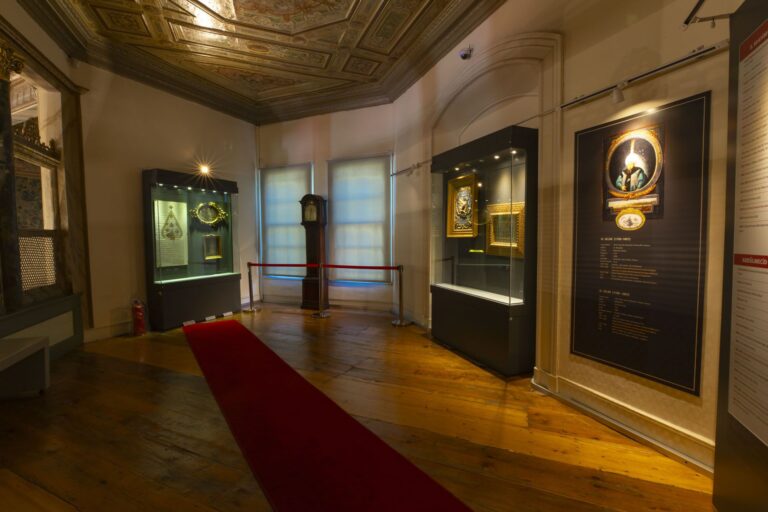Tekfur Palace Museum
The Tekfur Palace Museum, the only remaining palace structure from the Byzantine period, has opened its doors to Turkey and the world. Known as the Imperial House, it was used by emperors during the glorious period of Byzantium.
The palace, part of the Blachernae imperial complex, was used by Byzantine emperors from the 12th century onwards. The exact origins and founders of the palace are unknown. In the 16th century, it was referred to by Europeans as the Palatium Constantini and later as the Porphyrogenitus Palace. Positioned dominantly, protected by the city walls, it was described in ancient sources as a “High Palace.”

During the Latin invasion of Istanbul, which lasted 57 years, Tekfur Palace and most surrounding imperial structures were destroyed. Even the lead from the roofs was melted down and sold to Venetian traders.
The First Imperial Building Captured During the Conquest
Tekfur Palace was a primary target during the conquest of Istanbul. It became the first imperial building captured by the invading forces. The palace and its vicinity were the sites of intense battles during the conquest. The palace was later repaired and used for various purposes.

In the 17th century, Tekfur Palace, depicted with its roof in Piri Reis’s drawings, fell into ruin again. Parts of it were used as an elephant stable and a zoo. Later, it served as a glass and tile workshop, becoming famous for its tiles. These tiles were preferred in many mosque constructions, including the Sultan III. Ahmed Fountain and the Hekimoğlu Ali Pasha Mosque.
The Legendary Kasikci Diamond Found in Tekfur Palace
In the early 20th century, the palace was reduced to four walls. Between 1955 and 1970, it underwent restoration and managed to survive. The palace, also used as a glasshouse, became one of the most important glass production centers in the city. Around the solid structure, there were workshops related to candle making, copper pot production, and ammunition.
It is rumored that the Kasikci Diamond, which fascinates visitors at the Topkapi Palace, was found in Tekfur Palace.
Architectural Layout of Tekfur Palace
The most impressive part of Tekfur Palace is on the north façade, facing the courtyard between the city walls. The ground floor connects to the courtyard with openings supported by pairs of gray granite columns between the piers. One of the imposts that topped these columns has survived to the present day. The columns and capitals, which lost their supporting function, were renewed during the restoration in 1955 and later.
On the middle and upper floors, windows are placed under arches built with alternating rows of bricks and stones. The marble window moldings were completed in the last restoration, based on an original example. Between the arches on the middle floor, rich decorations made of cut stone and brick pieces are noticeable, showing different compositions in each arch. On the upper floor, two rows of green-glazed ornamental pottery stand out above the two-tier arches.
On the south wall, the interior-facing part of the building features casemates, while in the center of the outer façade, there is a small chapel within a protruding structure resting on marble consoles. The chapel, small enough for one person to worship, is believed to have belonged to the ruler or family members residing in this part of the palace.
On the short side of the palace, a large and wide balcony supported by stone consoles overlooks the city. The other façade of the building merges with a tower on the city walls.
During the last restoration by the Istanbul Metropolitan Municipality (IMM), the building’s roof was reconstructed and covered with traditional tiles. The lower vaulted floor and the upper wooden floors of the palace were completed. The staircase leading to the upper floors was redesigned in its original location with a modern design.
Tekfur Palace
The building, referred to as the “House of Porphyrogenitus” in some sources from the 14th century onwards, is generally associated with Tekfur Palace. “Porphyrogenitus,” meaning “born in the purple chamber,” described children born after their fathers became emperors.
Tekfur Palace, believed to be part of the Blachernai Palace complex, is thought to have been the official residence of the Byzantine emperors from the 13th century.
Located adjacent to the land walls between Edirnekapı and Ayvansaray, Tekfur Palace remained in ruins for many years after the roof collapsed due to fires during the Ottoman period. Archaeological excavations led by Prof. Filiz Yenişehirlioğlu from 1995 uncovered architectural remains and numerous objects made of tiles and glass.
Some of the findings and replicas of tile panels produced in the tile kilns here are also displayed in the museum. Tekfur Palace is the only palace structure from the Byzantine period in Istanbul that has preserved its architectural integrity to this day. The three-story building facing the courtyard boasts impressive decorations from the late Byzantine art period.
During the reign of Sultan III. Ahmed, tile kilns were established in the surviving part of the palace by ceramists brought from Iznik, and tiles were produced using clay from the Alibeyköy Stream. Works produced here include the tile panels of the Sultan Ahmed Fountain, the mihrab of the Kandilli Hekimoğlu Ali Pasha Mosque, and the panels of the Eyüp Cezeri Kasım Pasha Mosque Mihrab. Similarly, during the same period, pottery production and “Şişehane” glass workshops in the Tekfur Palace courtyard and surrounding area extending to Eyüp were significant.
- Student: 10 TL
- Adult: 20 TL
- Tourist: 40 TL
Tekfur Palace
Services Open every day except Monday: 09:00 – 17:00 / Monday: Closed
Cash and credit card are accepted for ticket purchases. Admission is free for visitors aged 65 and over and children aged 8 and under.
Contact 0212 233 47 23
https://www.tekfursarayi.istanbul
Şişhane Avenue, Edirnekapı, Fatih / Istanbul





